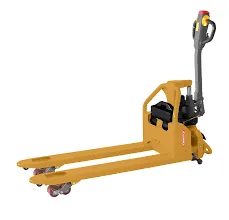


Understanding Manual Chain Hoists A Comprehensive Guide
A manual chain hoist is an essential tool in various industries, particularly in construction, manufacturing, and maintenance. Its simple yet effective design allows for the lifting and lowering of heavy loads with minimal effort, making it a favorite among professionals who require reliable equipment for their heavy-lifting tasks. This article delves into the functionality, types, advantages, and safety considerations of manual chain hoists.
What is a Manual Chain Hoist?
A manual chain hoist is a mechanical device used for lifting or lowering heavy objects using a chain. It comprises a chain wheel, a hook for securing loads, a ratchet mechanism, and a housing unit. The user pulls on the manual hand chain to lift or lower the load, utilizing mechanical advantage gained through the gears within the hoist. This type of hoist does not require any electrical power, making it particularly useful in areas without electricity or where portable solutions are needed.
Types of Manual Chain Hoists
Manual chain hoists come in various configurations, catering to different lifting needs and environments. The most common types include
1. Standard Chain Hoists Ideal for general lifting tasks, these hoists are versatile and commonly used in various industries. They can lift loads ranging from a few hundred kilograms up to several tons, depending on the model.
2. Lever Hoists This type uses a lever mechanism to exert force for lifting. They are particularly useful in confined spaces due to their compact design and allow for precise control when positioning loads.
3. Electric Chain Hoists While technically not 'manual,' these hoists deserve mention as they can operate with an electric motor, but often still feature a manual backup chain for emergencies.
Advantages of Manual Chain Hoists
2. Cost-Effective They offer a low-cost lifting solution compared to electric hoists, making them accessible for smaller businesses or contractors.

3. Simplicity The design is straightforward, and with minimal moving parts, maintenance is usually low. This simplicity ensures the hoists can be repaired or serviced on-site without requiring specialized knowledge.
4. Safety Manual chain hoists come equipped with safety features, such as overload protection and a brake system to prevent accidental load drops, enhancing workplace safety.
Safety Considerations
While manual chain hoists are user-friendly, safety is paramount. Here are some vital safety considerations
1. Load Limits Always adhere to the manufacturer’s specified load limits. Overloading the hoist can lead to failure and potentially serious accidents.
2. Inspection Regularly inspect the hoist for wear and tear, particularly the chains and hooks. Any signs of damage should lead to immediate repairs or replacement.
3. Stability Ensure that the load is stable and properly secured before starting the lifting operations. Unstable loads can shift during lifting, causing accidents.
4. Training Proper training is essential for anyone operating a manual chain hoist. Understanding how to use the hoist correctly will reduce the risk of accidents and enhance efficiency.
5. Use Personal Protective Equipment (PPE) Operators should always wear appropriate PPE, including helmets, gloves, and steel-toed boots, to protect against potential hazards in the work environment.
Conclusion
Manual chain hoists are invaluable tools in any lifting operation, thanks to their portability, cost-effectiveness, and ease of use. Understanding the types, advantages, and safety measures associated with manual chain hoists will not only enhance their efficiency but also ensure a safe working environment. As industries continue to evolve, these time-tested tools remain critical in tackling daily lifting challenges, proving their worth in a variety of applications.



